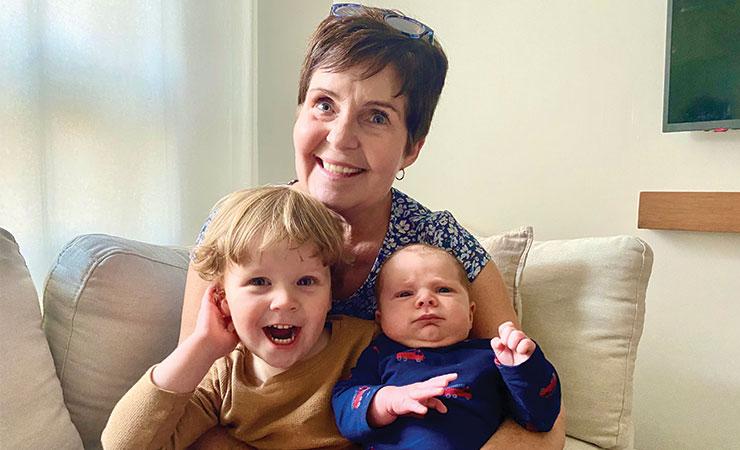
Pictured: Shannon Nearing credits skilled QEII team and new surgical robot technology for getting her life back.
When Shannon was diagnosed and underwent treatment for breast cancer in 2021 and 2022, she had no idea that within a few months of completing treatment, she would be faced with another health challenge. This one tested her in a different way.
“Who knew that I would describe my cancer journey as a ‘walk in the park’ compared to the pain I was living with,” says Shannon, who was diagnosed with spinal stenosis and degenerative disc disease in 2022. Spinal nerves in the region of her lower back were being compressed causing severe pain in her hip, leg, and foot.
Shannon had started to notice the pain years prior, which led to a consultation with Dr. Sean Christie, neurosurgeon at the QEII Health Sciences Centre. He had explained to her that surgery was likely in her future.
While she managed the symptoms and discomfort for a few years, the pain was intensifying.
“I was having a lot of pain and trouble walking. My symptoms were so limiting,” Shannon describes, adding that exercise and movement were something she enjoyed greatly but was having difficulty doing.
In October 2022, at 60 years of age, Shannon had her first spinal surgery, a laminectomy to ease the pressure on the nerves. Within a few months of the surgery, she knew that the surgery was not as successful as she had hoped.
“Months after surgery, I was still having a lot of pain and discomfort,” shares Shannon. “I think my breaking point was during a trip to Greece with my husband and friends. I couldn’t walk or keep up with the group. I didn’t want to be that person trailing behind with chronic pain. I just remember feeling so frustrated and done with all the pain.”
After returning from Greece and during a follow-up appointment with Dr. Christie, Shannon learned that the QEII had recently acquired new robotic surgical technology to aid in spinal surgeries. The technology, being fully funded by QEII Foundation donors, was a first in Atlantic Canada and Shannon was a surgical candidate.
While it can be common for spinal patients to require additional revision surgeries, one of the major advantages of the surgical robotics technology is how precise the technology allows surgeons to be, enabling tiny and accurate movements that would not be possible with the human hand alone. This can result in many benefits for patients including less pain, less damage to healthy tissues and structures, shorter recovery times and fewer complications.
Shannon, a retired neurology nurse practitioner at the QEII, had heard about surgical robotics before and was eager to have the technology aid in her treatment.
“I remember going into the OR and asking the surgical team if I could see the robot,” laughs Shannon. “It wasn’t as big as I thought it would be.”
It wasn’t long after that August 2023 robotic-assisted surgery, that Shannon was feeling different. “I was walking and adding more distance each time and there was no pain. When I saw Dr. Christie for my six-week checkup I said, ‘I can’t believe how much better I feel’”.
Shannon credits the precision of the robot and Dr. Christie’s amazing skills and knowledge for getting her life back.
She has returned to the things she loves – walking her dog, taking spin classes, doing yoga and Pilates but most importantly, planning trips to Ontario to visit with her daughter, son-in-law and precious grandsons.
“My grandchildren bring me the greatest joy in life. All I wanted to do was to be able to get on the floor and play, really play, with them. I can do that now, thanks to my surgery,” smiles Shannon, as she shares that playing and walking in the park will be her top focus when she visits her grandchildren in February.